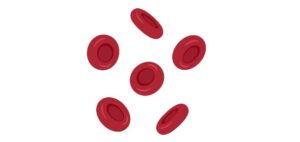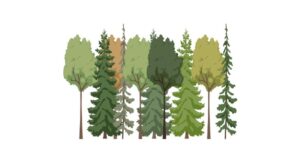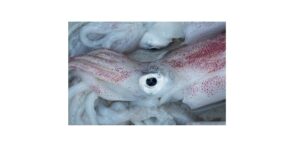Table of Contents
Chitin Definition
In certain organisms, a polymer of nitrogen-containing polysaccharide (C8H13O5N)n that provides a strong, protective coating or structural support. Chitin is a polysaccharide found in fungi’s cell walls and insects’ exoskeletons.
What is Chitin?
Chitin is a polysaccharide carbohydrate that belongs to the chitin family. Carbohydrates are organic molecules that are made up of carbon, hydrogen, and oxygen in a 1:2:1 ratio. They belong to one of the most important groups of biomolecules. Carbohydrates made up of numerous saccharide units are known as polysaccharides. Some are used as energy sources, while others have structural purposes.
Chitin History
Henri Braconnot, a French scientist, is credited with discovering chitin in 1811. He was the first to describe the sulfuric acid-insoluble chemical he isolated from mushrooms. It was given the name fungine by him. Auguste Odier, a French chemist, was also able to isolate the chemical from beetle cuticles and gave it the name chitine, which was taken from the Greek word χιτών (“chiton”), which meant covering.
The compound’s name was later changed to chitin. Chitin has been used in health and business since then. It has a variety of uses since it is nontoxic, biodegradable (therefore more environmentally friendly), and antibacterial. It’s been utilised in surgical sutures that disintegrate over time, for example.
It’s also been utilised in certain creams and cosmetics as an addition. The structure of chitin was discovered in 1929 by Swiss scientist Albert Hofmann 1906–2008 (also known as the discoverer of lysergic acid diethylamide, or LSD).
Chitin Structure
Chitin is structurally similar to keratin (a protein found in human hair and nails). It varies from keratin, however, because of its carbohydrate (polysaccharide) structural component. Its structure is similar to that of cellulose.

Chitin is a nitrogen-containing modified carbohydrate. It’s made up of N-acetyl-D-glucosamine monomers (C8H13O5N) n»1 in a linear polymer. The monomers are connected together by β(1→4) glycosidic bond, similar to cellulose. The monomers in cellulose, on the other hand, are glucose units.
Furthermore, each monomer of chitin has an acetylamine group rather than a hydroxyl group. This allows for greater hydrogen bonding between the polymers in chitin, resulting in improved structural strength. When the acetyl COCH3 groups in chitin are removed, chitosan is formed, which, unlike chitin, is water soluble.
Types of Chitin
Chitin is classified into three main crystalline forms: α-
Chitin: This is the most common kind of chitin. It’s made up of microfibrils that are organised in an antiparallel pattern. It has excellent mechanical characteristics and is less soluble in water. The existence of intra-chain hydrogen bonding accounts for the poor water solubility. It is found in arthropods, such as insects. It is highly mineralized in crustaceans, containing calcium and magnesium salts.
β-Chitin: This type of chitin is made up of microfibrils that are organised in a parallel pattern. It is more easier to hydrate than -chitin. It’s also quite adaptable. Squid pens and diatom spines contain it.
γ-Chitin: This kind of chitin is made up of the amino acids -chitin and -chitin. Certain insects produce it in their cocoons.
Biosynthesis of Chitin
Chitin is the second most common carbohydrate found in nature. It can be found in the exoskeletons of insects and crustaceans. In certain fungi, it is also a component of the cell wall. Protists, sponges, coelenterates, nematodes, mollusks, and Rhizobia are among the creatures that manufacture chitin.
Chitin is mostly produced in the epidermis and midgut of insects. Trehalose and glycogen might be chitin precursors. According to Kramer and Koga, 1986, and Cohen, 2001, the chitin biosynthesis process begins with trehalose as the first substrate:
- trehalose → β-D-glucose (by trehalase)
- β-D-glucose → glucose-6-phosphate (by hexokinase)
- glucose-6-phosphate → fructose-6-phosphate (by “glucose-6-phosphate isomerase)
- fructose-6-phosphate → glucosamine-6-phosphate (by “glutamine:fructose-6-phosphate aminotransferase)
- glucosamine-6-phosphate → N-acetyl-glucosamine-6-phosphate (by glucosamine-6-phosphate N-acetyltransferase)
- N-acetyl-glucosamine-6-phosphate → N-acetylglucosamine-1-phosphate (by phosphoacetylglucosamine mutase)
- N-acetylglucosamine-1-phosphate → UDP-N-acetylglucosamine (by UDP-N-acetylglucosamine pyrophosphorylase)
- UDP-N-acetylglucosamine → chitin polymer (by chitin synthase)
Chitin is frequently mixed with other chemicals (such as calcium carbonate) to produce a stronger composite material; pure chitin or calcium carbonate would be brittle and not as robust as the composite if used alone.
Chitin breakdown and synthesis occur concurrently and in a coordinated way in insects and crustaceans that moult and metamorphose. During moulting, a binary enzyme system (made up of chitinases and ~-N-acetylglucosaminidase) from the moulting fluid breaks down chitin in exoskeletons and gut linings into monomeric components.
Chitinases, in particular, breakdown chitin into oligosaccharides, which are then further degraded by ~-N-acetylglucosaminidase from the non-reducing end into N-acetyl-D-glucosamine monomers. The hydrolysis of the β-(1-4)-glycosidic link is catalysed by these enzymes.
Biological Importance of Chitin
Chitin is produced by soft-bodied organisms as a protective covering and mechanical support. Chitin is an important component of the exoskeleton of insects and arthropods. Insect body walls, stomach linings, salivary glands, mouth parts, and muscle attachment sites all include chitin. The cell wall of chitinous fungus contains chitin rather than cellulose.
Arachnids, in addition to insects, contain chitin in their hard outer coating. Mollusk radula and cephalopod beaks both include chitin. Chitin is not produced by humans or other animals. As a result, chitin-degrading enzymes might be employed as fungicides and insecticides against chitinous fungus and disease-causing insects.
In confectionery, drinks, and other foods, chitin and chitosan are employed as thickeners, texturizers, emulsifiers, humectants, and stabilisers. The US Food and Drug Administration considers chitosan to be generally safe. Individuals with crustacean allergies, on the other hand, may need to avoid foods containing chitin or chitosan.













